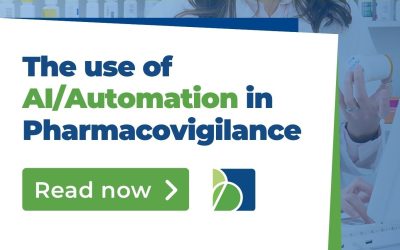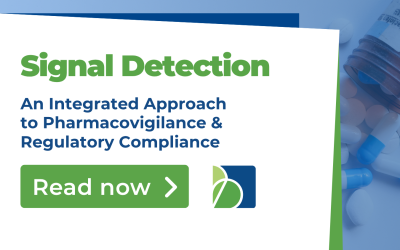Navigating local nuances can significantly impact a company’s ability to retain market access. For biotech and pharmaceutical companies, these markets are essential expansion zones with growing demand. But the path to compliance isn’t simply a matter of translating SOPs or applying EU frameworks globally. Instead, it requires a region-specific approach, one that combines central oversight with deeply localized execution.
This article explores the real-world lessons from these regions, showing how biotech and pharma companies can build pharmacovigilance systems that balance global oversight with local accountability.
Why multi-region pharmacovigilance compliance demands local precision
Pharmacovigilance systems are global in ambition but local in execution. While EU GVP modules or ICH guidelines may offer a regulatory baseline, health authorities in Kazakhstan, Egypt, or Saudi Arabia each impose distinct obligations for adverse event reporting, literature screening, and safety communication.
In CIS markets, regulatory harmonization through the EAEU is progressing unevenly. Some member states maintain legacy national requirements alongside newer frameworks, creating a dual-compliance burden for sponsors. In MENA, the fragmentation is even sharper. Agencies like the Saudi Food and Drug Authority (SFDA) or the Egyptian Drug Authority (EDA) demand Arabic labeling, in-country safety contacts, and local literature monitoring, with limited digital infrastructure to support harmonized submissions.
To ensure multi-region pharmacovigilance compliance, companies need a flexible PV model that integrates local affiliate networks, accounts for these nuances, and connects cleanly with global safety systems.
Lessons from CIS and MENA: What biotech leaders should know
1. A centralized system only works with local anchors
Companies embracing centralized pharmacovigilance outsourcing are reaping benefits in efficiency, oversight, and cost management. But in CIS and MENA markets, centralization cannot exist without local infrastructure. Local literature reviews, adverse event submissions in national languages, and direct communication with agencies require in-country PV personnel or affiliate partnerships.
Trying to cover these obligations remotely delays approvals, introduces compliance risks, and ultimately undermines the value of centralized safety oversight. The lesson? To ensure true multi-region pharmacovigilance compliance, local representation is foundational.
2. Regulatory planning comes first in multi-region pharmacovigilance compliance
In CIS and MENA, PV expectations are embedded in the marketing authorization process from the start.
In Kazakhstan, for example, national rules aligned with the EAEU require a designated Local Pharmacovigilance Contact Person to be named during submission, not after approval. Belarus and Armenia follow similar procedures, where local PV representation is not only expected but enforced as part of the national authority’s compliance checks. Even in Russia, which has paused full EAEU harmonization, a local safety officer must still be listed and available to communicate with Roszdravnadzor, the national regulator.
In MENA markets such as Saudi Arabia, the SFDA expects sponsors to appoint a local QPPV and ensure Arabic-language reporting workflows are already in place by the time of submission.
This is real proof that multi-region pharmacovigilance compliance in CIS and MENA is upstream. Companies that build their PV infrastructure only after dossier submission risk delays, rejection, or prolonged negotiation with regulators. By integrating pharmacovigilance planning into the initial regulatory roadmap, including identifying in-country PV representatives, sponsors accelerate approvals and avoid preventable compliance gaps.
3. Don’t underestimate local literature requirements
Regulatory bodies in both CIS and MENA require regular screening of national medical literature for safety signals. Unlike global literature monitoring, which is often centralized and standardized, local literature review is multilingual and greatly contextual. It requires not only linguistic fluency but also an understanding of local terminology, publication norms, and data sources.
Biotech firms relying solely on global vendors or automated tools often miss region-specific signals or submit non-compliant summaries. A better approach is combining centralized pharmacovigilance services with country-level literature reviewers trained in national compliance standards, a model Biomapas implements across CIS and MENA.
What does this mean for your pharmacovigilance services model?
Multi-region pharmacovigilance compliance doesn’t require duplicating entire systems across every country. Instead, it requires knowing where to centralize and where to localize.
Successful companies apply a hybrid model: a centralized vendor partner manages global consistency and oversight, while embedded local networks deliver compliance at the country level. This setup provides full visibility, reduces administrative burden, and ensures that critical safety obligations are met, whether in Brussels or Bishkek.
At Biomapas, we support this hybrid reality through:
- CIS pharmacovigilance services that align with EAEU and national authority requirements
- Local affiliate coverage in MENA markets with Arabic-language reporting and in-country QPPV support
- Integrated global safety oversight that ensures alignment with EudraVigilance, VigiBase, and FDA expectations
Multi-region pharmacovigilance compliance is built on local insight
Ensuring multi-region pharmacovigilance compliance in CIS and MENA is not about making the local fit the global. It’s about designing a system that honors both.
Whether you’re outsourcing your pharmacovigilance services or building internal systems, the message is clear: regulatory alignment starts with local understanding. And in high-stakes regions like CIS and MENA, that understanding can make the difference between approval and delay, between trust and risk.
Explore how Biomapas can help align your global PV strategy with real-world compliance in the markets that matter next.









